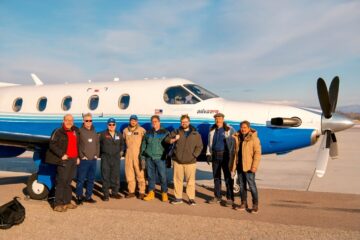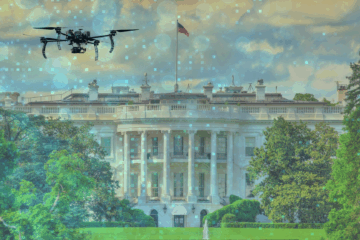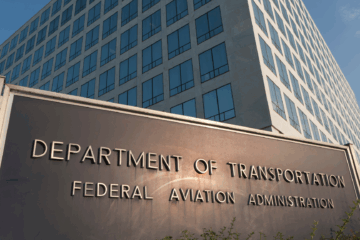We are excited to announce that Mosaic ATM has been awarded a NASA Small Business Innovation Research (SBIR) Phase I contract for the development of a NextGen Incident Response Communication System (NIRCS). This project represents a significant step in advancing wildfire management and disaster response technology.
As global warming continues to set records—2023 was the hottest year in over a century, and January 2024 was the hottest January on record—the frequency and intensity of extreme weather events, including wildfires, has increased dramatically. The World Resources Institute estimates that forest fires today burn twice the amount of tree cover as they did two decades ago. In the U.S., wildfires have caused immense economic, environmental, and human costs, from destroying property and natural resources to widespread health issues due to poor air quality.
NASA’s Aeronautics Research Mission Directorate (ARMD) has been actively researching new capabilities to support the management of wildfires, particularly through technologies that improve coordination of airspace operations. Despite significant advancements, one of the remaining challenges is the lack of reliable, resilient, and secure data communications systems to support quick decision-making during wildfire events.
NIRCS aims to address this challenge by providing a mobile, long-range broadcast communications system to enhance critical information flow during wildland firefighting operations. Leveraging ATSC 3.0 technology, a digital terrestrial broadcast system built on the internet protocol (IP), NIRCS enables the one-way communication of various data types, including:
- Vehicle position and operational volume data
- Temporary flight restrictions (TFRs)
- Notices to Air Missions (NOTAMs)
- Airspace procedures, structure, and adaptation
- Weather information
- UAS surveillance video
- High-fidelity audio and ultra-high-definition video
- Mission-critical operational data such as UAS (uncrewed aerial systems) surveillance and aircraft position information.

Figure 1. A NIRCS Station
NIRCS will offer several important benefits for improving wildfire management, including:
- Real-time data dissemination: NIRCS will provide a reliable and secure way to broadcast data, including vehicle positions, operational volumes, and flight restrictions, directly to firefighting teams and aerial units.
- Enhanced coordination between manned and unmanned aircraft: UAS are increasingly used in firefighting, providing real-time imagery, mapping, and aerial ignition capabilities. However, real-time data sharing between UAS and manned aircraft has been challenging. NIRCS will enable the continuous broadcast of UAS position data, allowing for closer coordination and reducing the need for large separation distances between different aircraft.
- Improved efficiency and safety: By reducing the reliance on voice communication over radio channels, NIRCS will speed up the decision-making process, allowing firefighting aircraft to operate more effectively near critical suppression points.
While the initial use case for NIRCS is wildfire management, the system’s flexibility makes it applicable to various disaster response operations. By ensuring the rapid dissemination of critical information, NIRCS has the potential to become an essential tool in managing various emergency situations.


Figure 2. Conceptualization of in-cockpit pilot display showing UAS Info; pilot aircraft is blue chevron in the center of the range rings (left). Conceptualization of in-cockpit pilot display streaming UAS surveillance video (right).
This incident response communication system project reflects Mosaic ATM’s ongoing commitment to using cutting-edge technology to solve some of the most pressing challenges in aviation. We look forward to collaborating with NASA on this important initiative and contributing to the future of incident management and safety.
A big thanks to Mosaic ATM’s R&D Lead Engineer, Tim Bagnall, and Principal Analysts Dan Wesely and Michael Graham for their efforts in securing this project and their continued work with NASA to make it a reality.


